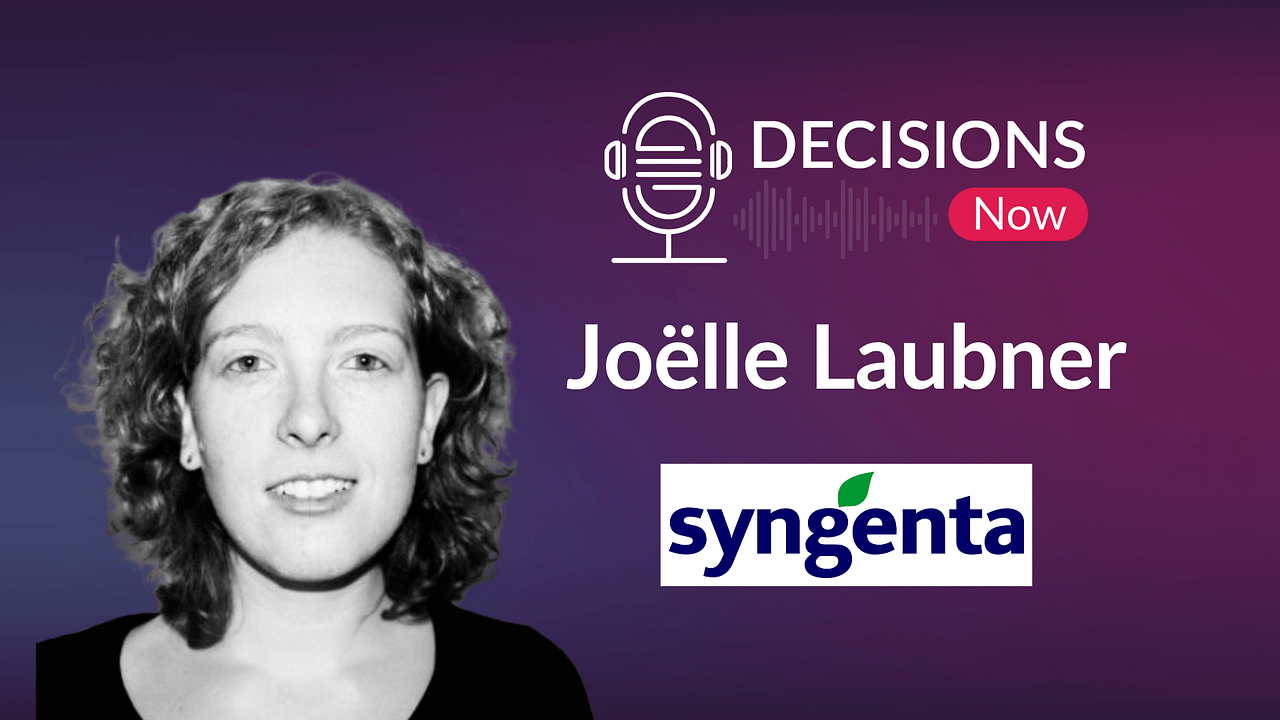Companies have been racing to leverage artificial intelligence (AI) and data science to succeed. But before teams can benefit from them, it’s important to establish these practices in a manner that’s profitable and done correctly, so we talked to expert Josh Edwards, global data science and operations director at Black & Veatch.
In this conversation, co-hosts Rigvinath Chevala, Evalueserve’s chief technology officer and Erin Pearson, our vice president of marketing talk to Edwards about common obstacles and best practices when establishing an AI practice, picking the right use cases, next steps, dodging the hype and more. Subscribe to the Decisions Now podcast today, you can find us on Spotify, Apple Podcasts, and Amazon Music among other platforms.
Common Obstacles When Establishing an AI Practice
Edwards discussed the common obstacles that businesses face when launching an AI practice. Rigid business structures and an investment framework that doesn’t allow for innovation are one of them.
“You’ve got to tackle that one first if you haven’t already,” Edwards said. “A good way to do that is to tap into your existing innovation efforts. If not, you must establish one and ensure you have the right investment framework.”
Companies should ensure their board and executive teams are educated on AI, lack of awareness can hurt the practice. Change management programs and education play an important role. He also mentioned that teams should look into the health of their automation programs to ensure it’s functioning well, which ensures the success of the AI practice.
“You need to spend a little time there and kind of understand the cultural acceptance of that automation program. And then lastly, I would say the fourth common obstacle is the lack of in-house skills for machine learning and leveraging AI,” Edwards said. “So finding the right partner to jump-start is really important.”
The first one resonates with him personally from an investment decisioning standpoint, Chevala said and asked Edwards, what is driving the desire to build these practices and why there’s such a higher failure rate.
Best Practices for Starting an AI Practice
“It’s a losing proposition to wait for AI to come to you. A lot of companies recognize that there’s been tremendous success in many industries right now,” he said referring to ChatGPT, Dall-e, and other generative AI.
Here are four components Edwards emphasized companies should understand about their AI practice.
1. Understand that AI isn’t a magic bullet for a business, and expectations must be set clearly.
2. Look at the foundation of AI which is data, and ensure there’s a strong data governance, data quality, and data engineering function in place within the company.
3. Learn what your peers and partners are doing with AI. Having the right technology stack is important as well as engaging the business and starting small so you have sponsorships.
4. Align your AI effort with your business model and strategy, giving your effort a purpose.
“A great way to do that is through AI workshops. So make sure you go through the ideation phase, get the right charters, prioritize it through your AI governance council, and then send it to your AI team, Edwards said.
Often a lack of good AI project portfolios leads to companies striking out after one or two projects.
When building the initial AI practice, there are a few indicators that show you’ve got it right and start scaling up, Edwards said.
Those include having a healthy backlog of AI charters and ideas, seeing that the business is engaged, and having realized value from projects.
Picking the Right Use Cases
There’s a whole notion of monetizing the AI practice, showing the business outcomes and ROI are a key piece, Chevala said.
“But what are the typical use cases they could get started with versus building or building on their own or finding something off the shelf in the market?” he asked Edwards.
Edwards recommends starting with the customer, from loyalty to incremental revenue and retention. Next teams can choose to focus on product development and quality and also, supply chain.
“There’s a lot of work there. Particularly you can do supplier rationalization. You can do parts rationalization, contract rationalization for liabilities and terms and conditions,” Edwards added.
Next Steps
When approaching a project, teams must measure its’ value and what it will bring in, then identify the extra costs and additional value if your project is picked, and also understand the realized value once it is in production.
There’s a fourth bucket that is often underestimated, and that’s just the value that you can bring back into your AI or data science team through going the exercise of developing
a derived data set or building out a new capability that they can reuse on the next project.
“In software, you often build to reuse, in AI, would you be able to create a base model and then use it for each use case,” Chevala said.
Dodging the Hype
“There’s a lot of low value, kind of shiny AI efforts, and they can be good starting points, but you can’t finish there,” Edwards added. “I think there needs to be expectation setting and education of your executive leadership that this is a journey that you go on with AI doesn’t happen overnight.”
The innovation must support the business outcomes and create something that’s narrower and less general AI machines.
“So something like Chat GPT is like sitting down for a five-course dinner and going right to the dessert. So you’ve got to make sure you step through the proper processes and get the right nutrition before you indulge in dessert,” Edwards said.
Finally, Pearson asked what the main takeaway or final advice Edwards would offer to someone establishing an AI or data science practice.
“If AI is not part of your digital transformation program, you’re doing your digital transformation wrong, it needs to be a heart and center of that,” Edwards said. “And then the second thing is that data underpins all of that. So take whatever investment that you’re making in data and times it by ten. That’s where it needs to be.”
For more advice on establishing a successful AI practice, subscribe to the Decisions Now podcast and listen to the full episode!


